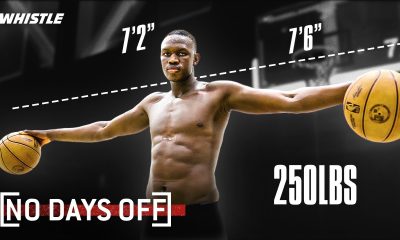NIL
Experts worry about a lack of addiction treatments as legalized sports betting grows


BEN YEW: He gambled away every last penny.JOE MALONEY: There is a vast, predatory and pervasive illegal market sitting there as a digital storefront, right next door to legal operators.CAIT HUBLE: There’s no federal funding for gambling addiction.RIDDLE: The federal government puts billions of dollars into treatment for alcohol, tobacco and substance use disorders. Many states do already funnel some money into treatment and intervention for gambling, but funding varies a lot, and experts say it’s not enough to offer resources for people when they have already devastated their lives and their bank accounts. Michelle Malkin is director of the Gambling Research & Policy Initiative at East Carolina University.YEW: I no longer had a need for the offshore sites.RIDDLE: On the question of exactly how much responsibility the legal gambling industry should bear for lives ruined, he says that’s for states to figure out on their own.HUBLE: Gambling is several decades behind in terms of public opinion and recognition of it as a mental health condition.(SOUNDBITE OF BILLY HAMMER’S “BEST PART (INSTRUMENTAL)”) Transcript provided by NPR, Copyright NPR.YEW: My moral center and any values that I have or had at that time, or any time I was active addiction, they are completely, completely eschewed and just completely ignored, and they sink to the deepest, darkest depths of your soul.MALKIN: When it comes to, like, inpatient, which people need for gambling, just like drugs and alcohol, there is less than five places in the whole country that specialize truly in gambling.RIDDLE: Yew picked up his own gambling habit when he was a young kid. It ruled his life for years. He says gambling robbed him of many things – his first marriage, his relationship with his daughters.RIDDLE: Yew is 42. In 2018, he had already been gambling for years. That’s the year a major Supreme Court case legalized sports gambling. Yew says he remembers the impact taking hold.RIDDLE: Representatives from the gambling industry argue that it’s critical to keep gambling legal. Joe Maloney is with the American Gaming Association, the primary industry group for online and legal gambling.MICHELLE MALKIN: We don’t just need resources for the people who have gambling disorder. We need to be doing the outreach and education early.RIDDLE: Malkin warns that gambling is a growing problem on college campuses. Starting young can set people up for a lifetime of struggle. She says there also needs to be more specialized treatment available.Katia Riddle, NPR News.RIDDLE: They have been advocating for legislation that would allocate millions for treatment and intervention in federal funds directly from the profits of the gambling industry. They estimate the cost to society of problem gambling – things like incarceration and legal fees – to be at least billion annually.MALONEY: And does not invest in problem gambling treatment and services, does not invest in responsible gaming measures.KATIA RIDDLE, BYLINE: Looking back on his life, Ben Yew says gambling was in his blood. There’s a famous story about his parents’ honeymoon and what happened there with his dad.RIDDLE: Offshore sites – that’s one of the ways he had been gambling before it was legal in the U.S. Illegal sites are still part of the gambling ecosystem, but now people can also gamble legally in 38 states. Last year, the industry reported total annual profits of more than billion. Experts who study this problem say not enough of this profit is going to mitigate the devastation gambling causes to people’s lives. Cait Huble is with the group the National Council on Problem Gambling.RIDDLE: Maloney points out that disincentivizing legal gambling could drive people to these illegal platforms.NPR transcripts are created on a rush deadline by an NPR contractor. This text may not be in its final form and may be updated or revised in the future. Accuracy and availability may vary. The authoritative record of NPR’s programming is the audio record.Americans will legally wager billion in the NCAA’s March Madness this year. That’s according to an industry group’s estimate, and it’s just one example of how much the gambling biz has grown. As NPR’s Katia Riddle reports, some warn that help for problem gamblers isn’t keeping pace.SARAH MCCAMMON, HOST:
NIL
How Wisconsin football’s recruiting approach has been forced to evolve during the Luke Fickell era
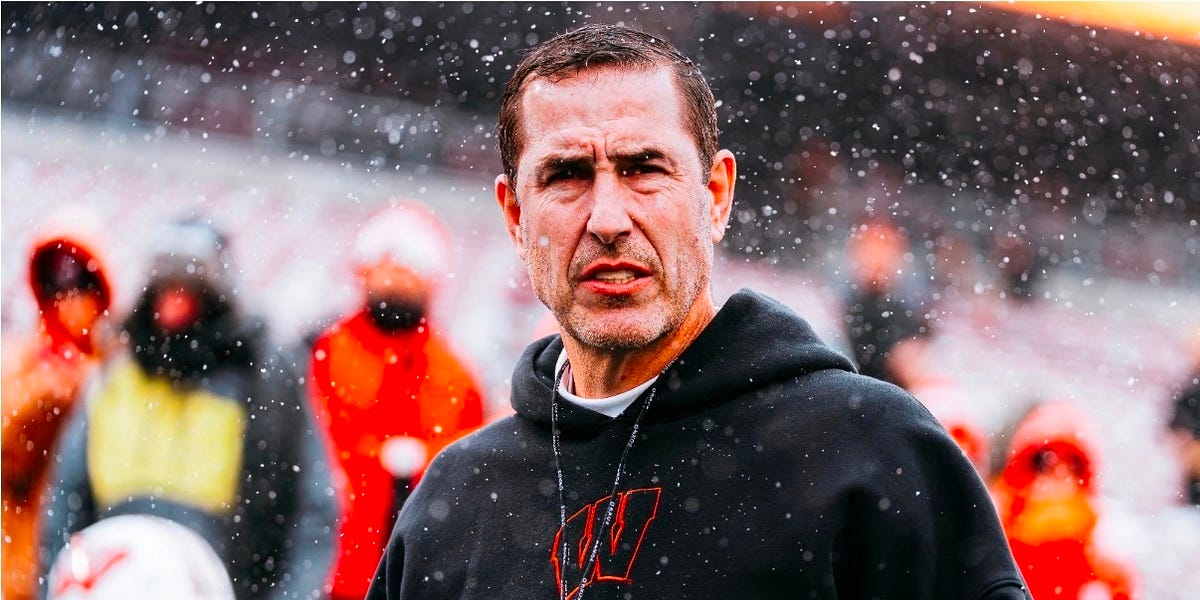
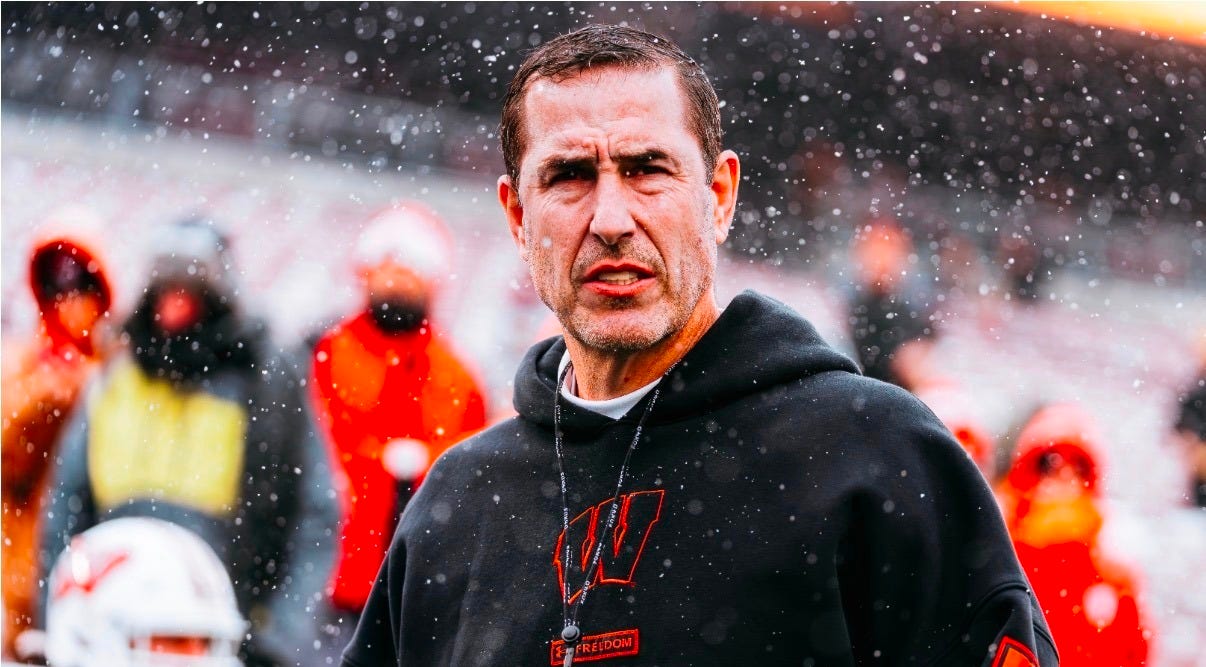
There was a moment, not all that long ago, when it felt like the University of Wisconsin football program had finally found the right steward for its next era. Sit back and watch Fickell’s introductory press conference from Nov. 2022. You’ll see it: the fully formed blueprint, the clarity of vision, the confidence of a coach who had built Cincinnati into a College Football Playoff contender by leaning on something other schools couldn’t imitate.
Relationships. Development. High-school recruiting. Ownership of the Midwest. That was the sales pitch. That was the promise. And for about fifteen minutes, it sounded like the perfect marriage between a coach with a proven developmental background and a program that had built three decades of winning football on those very same values.
But three years later? The sport changed faster than the blueprint did.
And nothing illustrates that evolution, or that philosophical pivot, quite like looking at what Fickell said on Day 1, and what he’s saying right now.
From the jump, Fickell laid out a recruiting philosophy rooted in simplicity. Wisconsin, he said, would build from the inside out, starting with a “300-mile radius” that would serve as the core and crux of the program’s build.
Verbatim, Fickell said:
“Within a 300-mile radius, you can build the core and the crux of your program,” Fickell said during his introductory press conference. “And that’s what I love about this opportunity, is that within a 300-mile radius, that will be the core of what it is that we do. I have a good grasp on that. I’ve got to learn a lot more about maybe the 50-mile, the 100-mile radius. But as you get into Chicago and the areas that these guys have done an unbelievable job in, there are a lot of roots that have been built there.
“I know if we can kind of capture that within the 300-mile radius of where the core of the program is, then we can extend into the other areas where we’ll look at the history of what’s been really good here,” Fickell continued. The pipelines and those kinds of things. We’ll use a lot of the connections we’ve had. There are a lot of former great players who are from Ohio as well. We’ll have guys with backgrounds in different areas.”
When Fickell talked about that radius, he wasn’t describing some abstract idea. He was talking about a region that included places like Detroit, Minneapolis, Indianapolis, and St. Louis, as well as the heart of Wisconsin and the football-rich pockets of Illinois, Michigan, Indiana, and Iowa.
In his mind, this was where the backbone of the roster would be built. This was where the high school relationships lived, where the Badgers could win recruiting battles by being smart and connected. And this was where he believed the heavy lifting would happen. That wasn’t lip service.
That was the Cincinnati model brought north: lock down Wisconsin, live in established long-term pipelines across the Midwest. Then, supplement using the transfer portal sparingly, but only when a player fits perfectly.
Again, Fickell’s words:
“I’m a high school recruiting guy that says it’s about development of young men,” Fickell said. “Now, sometimes people will say, ‘You had this transfer.’ Yeah, we have had a matrix for transfers. We have had literally a matrix to say they’ve got to hit these points in these situations and these things, because the last thing I want to do is bring a guy into our program here in particular that’s going to mess with the culture, mess with the environment, mess with the relationships inside a lot of those rooms.
“So in my mind, it’s got to be a right fit, and it’s got to be the right people. The thing about transfers is sometimes you don’t know them, and you don’t have the opportunity like you’ve had in high school to get to know them, to be in their home, to build some relationships, and know when they walk in the door they’ve got four or five years to grow and develop into what it is that you want. I’ve never been a proponent of the transfer portal, but I think we’ve used it and would use it only in ways to fill gaps.”
For an outsider with no ties to the program, it was a developmental philosophy that fit the Wisconsin ethos like a glove. Toughness. Development. Ideally, players would become starters in Year 3, contributors in Year 4, and pros in Year 5. That’s the Barry Alvarez model. That’s the DNA of the Badgers. What more could fans have wanted?
And Fickell, along with the revamped recruiting department he brought along with him from Cincinnati, sounded ready to replicate it.
College football, though, doesn’t wait for your philosophy to catch up. NIL exploded. Free transfer rules wiped out continuity. Roster turnover hit 40–50% annually. Programs with deep donor pools — Penn State, Ohio State, Oregon, Texas — turned roster building into a cold, economic arms race.
And suddenly, the sport Fickell had built his blueprint around was gone. The 300-mile radius? It didn’t hold.
Wisconsin has lost multiple in-state recruits since Fickell took over, a trend some attribute to the staff lacking the same cachet with local high schools while trying to leverage the program’s brand more nationally to chase higher-end talent. There have been cases where that approach has paid off, but the larger pattern has been harder to ignore. The 2026 cycle underscored it again. The staff pushed their chips in on players like Amari Latimer and Jayden Petit — some of the top-ranked prospects at their positions — but still couldn’t hold onto them when it mattered.
Latimer flipped to West Virginia on Signing Day, and Petit, who the staff believed could eventually be a cornerstone, flipped to Oklahoma.
That doesn’t happen in the old model. But it does happen in the modern marketplace. The developmental model? It cracked.
Wisconsin couldn’t keep players long enough to develop them. You build a three or four-year plan for a high school prospect, only to watch another school drop an NIL number you can’t match. Or you redshirt a player, and they transfer before Year 3 because the depth chart looks crowded.
That turns every high-school recruit into a risk, not a building block. Fickell knows this now. And he said as much on Signing Day 2026.
“Not saying we don’t want to take high school kids, not saying we don’t want to take the in-state kids,” Fickell said. “I think for us, just recognizing and saying, okay, now this league is a bit different. And it is harder and harder with younger guys to think you can be successful. And so the balance there with the higher end of what you really believe as freshmen, we call them draft picks now. I mean, you don’t have 22 draft picks.
“So that was a little bit more of the idea, like, okay, let’s be disciplined in what we’re doing, which is going to put you in a situation where the transfer portal is going to have to be one of those things that’s probably bigger than you’ve ever used before. As well as retaining the guys that you’ve got in your program. You’ve got to invest and make sure the ones you have here are the ones that you’ve got to be able to keep here.”
That isn’t the 2022 blueprint, nor is it the framework college football was built on. It’s a coach and an administration reacting to the sport as it currently exists, even if they didn’t have the foresight, the positioning, or the resources to meet this era head-on. They’re pivoting now, and the question becomes whether they can deliver before the clock runs out.
The most honest problem? You cannot build for 2028 when your job depends on 2026. Wisconsin is 17–21 under Fickell, 10–17 in Big Ten play, and is just 2–11 against AP Top 25 teams. Not to mention, the program missed bowl games in both 2024 and 2025 for the first time since 1991-92, breaking a 22-season postseason streak. The fanbase is restless.
Donors are watching. And even if you land high-school players that you believe in, there’s no guarantee they’ll still be on your roster when it’s time for them to help you win. As Fickell hinted on National Signing Day, you need players who can help immediately, and you need them on campus in January if you want any realistic chance of getting production in Year 1.
“Being here in January was a really big thing for us,” Fickell said. “If you can’t come in January, you’re starting to look at guys and say, How do we have a chance to play this guy in Year 1 if they’re not here? You’ve gotta feel like the guys can get on the field. A lot of that has to do with some natural ability, but a lot of it has to do with a size that you have to have.”
That is the polar opposite approach of the Cincinnati-to-Wisconsin developmental arc he preached in 2022. It’s not because Fickell lied. It’s because the sport changed, and he either adapts or gets left behind.
That adaptation has finally arrived. Wisconsin just signed 13 players in its 2026 high-school recruiting class, the smallest class the program has taken since 2012, when the Badgers signed 12 athletes, and it was entirely intentional. Fickell said it openly: the philosophy has changed.
Instead of trying to bring in 22 high-school players every year, Wisconsin is now taking far fewer freshmen, treating them more like draft picks, and investing more heavily in proven players through the transfer portal. It reflects a model most top-tier programs use. It’s one built around having older players, instant-impact additions, and far fewer long-term projections. Because if you’re coaching for your job, you simply can’t wait multiple years for a developmental plan that might never materialize.
And the truth is, Wisconsin wasn’t positioned financially or structurally to compete in this new era. The NIL infrastructure wasn’t there. Athletic Director Chris McIntosh acknowledged it. Prominent donor Ted Kellner acknowledged it. By their own admission, Wisconsin operated in the “bottom third” of the Big Ten in NIL spending this past year. That’s how West Virginia beats you for a player you spent multiple years recruiting.
McIntosh and Kellner are now promising a long-overdue investment of resources in the football program. They want Wisconsin in the “top third” of the conference. They want a stronger donor base. They want to win big-time portal recruitments. But it’s a bold claim to suggest the Badgers will suddenly leap from the lower tier of Big Ten spending into the same financial lane as blue-blood programs chasing playoff berths.
And it’s even harder to project where Wisconsin will realistically land when nobody truly knows what other programs are operating with in terms of money behind the scenes. Whether the promised influx of NIL funding actually materializes remains to be seen, but the message inside the building has shifted: development alone won’t bridge the gap anymore.
Fickell has been candid about what that shift requires. On Signing Day, he offered one of his clearest acknowledgments yet that modern recruiting isn’t just about relationships or evaluations anymore, it’s about investment.
“I think it comes down to an investment,” Fickell explained. “And the truth of the matter is, in a traditional way of doing things, recruiting had been a lot about relationships. And I’m not saying that there aren’t still some traditional things, but there is a bigger piece of what recruiting is. And if you’re not willing to invest in some guys and you feel like they could get on the field, then you’ve got to make some disciplined decisions.”
You have to acquire proven production to win now, because universities need the revenue stream, and the ones serious about winning put their money where their mouth is. Football is the lifeblood of any successful athletic department, and the consistency Wisconsin once enjoyed meant the Badgers were never forced to invest like their peers, at least not until the product became nearly unwatchable and the reality finally set in.
And that leaves Wisconsin somewhere between what Fickell promised and what the sport has forced him to become. The old model was built through high-school recruiting, long-term development, maintaining strong Midwest relationships, and occasional use of the transfer portal.
The new standard across college football is one built on a portal-based roster construction, smaller, more selective high school classes, expectations of instant contributions, older, more physically mature players, a draft-pick mentality toward freshmen, and a staff operating in survival mode as it coaches for its future. None of this is a shot at Fickell.
But make no mistake: Fickell deserves the lion’s share of the blame for where Wisconsin sits today. Three seasons in, there are very few data points suggesting he’s been a difference-maker on Saturdays. His game management has been shaky, his situational decisions have been costly, and there are real questions about whether he has stayed ahead of the curve or fully understands what it takes to win in this version of the Big Ten.
Fickell has routinely been slow to adapt, miscalculated which schemes translate in this league, assembled a subpar coaching staff, and, too often, failed to put his players in the best positions to succeed.
But all of that can be true while also acknowledging the other half of the story.
Fickell attempted to build Wisconsin using the exact recruit-and-develop blueprint that once made him one of college football’s most successful coaches, and the sport changed beneath his feet. The Badgers were slow to give him the resources required to execute that plan, and when you aren’t the kind of coach who tilts games through pure in-game acumen, you have to compensate with terrific coordinators and high-end talent.
This staff has rarely gotten more out of the roster than the raw talent already on it, which makes acquiring better players non-negotiable. So while it’s fair to question whether Fickell and his recruiting department can actually maximize whatever new NIL funding they’ve got at their disposal, it’s equally true that the athletic department did Fickell no favors by asking him to win while operating with fewer resources than his peers.
To Fickell’s credit, he’s fully aware of how difficult the evaluation piece has become in this era. He said something on Signing Day that spoke to the razor-thin margin staffs operate on, where almost every high school eval has to be correct because developmental timelines no longer exist.
“The lifeblood of what you do is still bringing guys in that you can develop, and we’ve got to be able to do that,” Fickell said on Signing Day. “You can’t miss on those guys that are going to be developed. That’s what’s sometimes harder. You don’t miss on four and five-star guys. They might not pan out completely, but there’s a reason those guys are higher rated or ranked in a lot of things — they’re more developed. You’ve got a good idea whether their high-end ceiling is better than somebody that’s a two or three-star.
“Usually, the reason that they’re ranked a little bit higher is that they’ve got an opportunity to walk in and play a little bit more. So, there’s a greater balance in making sure you’re doing a better job of being right about the guys that maybe can or can’t play just yet.”
Now, finally, the staff and athletic department appear aligned with reality. The NIL commitment from private donors and corporate partnerships is rising, so they say. The recruiting approach has shifted. The urgency is unmistakable. Fickell is coaching with the understanding that Year 4 determines everything. Wisconsin has gone from trying to “build the core and crux” of the program within a 300-mile radius to preparing itself to assemble a roster capable of winning now through the portal — not because the vision changed, but because the sport demanded it.
And this offseason will reveal whether the adaptation came too late or just in time.
We appreciate you taking the time to read our work at BadgerNotes.com. Your support means the world to us and has helped us become a leading independent source for Wisconsin Badgers coverage.
You can also follow Site Publisher Dillon Graff at @DillonGraff on X.
NIL
$10 million college football coach latest addition to growing Penn State coaching search

The Penn State Nittany Lions are deep into a complex coaching search that has extended well past the firing of James Franklin. Athletic director Pat Kraft aimed to secure a new leader quickly to salvage the recruiting class, but the process has dragged into December without a resolution.
While many premier programs have already filled their vacancies, the situation in State College remains fluid as the administration explores every available option to stabilize the team’s future.
A surprising new candidate has emerged from within the Big Ten Conference to add a layer of intrigue to the saga. This potential hire commands one of the most dominant units in the nation and possesses a resume highlighted by extensive NFL experience.
His background includes multiple Super Bowl championships and a previous stint as a head coach at the professional level, distinguishing him from other names linked to the job.
Reports indicate that Penn State has officially contacted this high-profile coordinator regarding the opening. Poaching a key asset from a bitter rival would represent a massive swing for the program. The move would bring a defensive mastermind to Happy Valley while simultaneously weakening a competitor currently vying for a conference title.
Super Bowl-Winning Assistant Is Candidate For Nittany Lions Job
Ohio State Buckeyes defensive coordinator Matt Patricia has become the latest focal point in the search. CBS Sports College Football Insiders analyst Chris Hummer detailed the development during a podcast on Thursday.
“I think there’s a couple of candidates that are floating out in kind of the ether,” Hummer said. “A name that’s come up the last 24 hours for me a little bit is Matt Patricia at Ohio State, the defensive coordinator.”

According to Alex Gleitman of Lettermen Row, Penn State has contacted Patricia and his representation about the position. Patricia is currently in his first season back in the collegiate ranks since serving as a graduate assistant with the Syracuse Orange in 2003.
His impact in Columbus has been immediate and profound. The Buckeyes boast the top-ranked defense in the FBS, allowing just 204 yards and 7.8 points per game. The seamless transition from former coordinator Jim Knowles to Patricia has been credited for the rapid development of players such as linebacker Arvell Reese.
Although his time as a head coach in Detroit did not yield a winning record, Patricia has done an impressive job reshaping his reputation this season. His unit is undeniably the best in college football and has been a massive asset for Ohio State as they pursue a national title.

There have been no reports that Patricia has formally interviewed with Penn State, but the inquiry is notable. Ohio State head coach Ryan Day has successfully replaced coordinators before, yet losing Patricia would be significant.
The Buckeyes have already seen offensive coordinator Brian Hartline agree to become the next head coach of the USF Bulls. Hartline will remain with the team through the postseason, but the potential exit of Patricia would leave Day with two major voids to fill.
Read more on College Football HQ
NIL
How BYU kept Kalani Sitake away from Penn State with Crumbl Cookies
Dec. 5, 2025, 5:49 a.m. ET
- Kalani Sitake was rumored to be Penn State’s top target for its coaching job.
- After seeing reports, Crumbl Cookies CEO Jason McGowan stepped in and used fan support and money to convince Sitake not to leave.
With its signature pink box, Crumbl is a dessert chain founded in Utah known for making big cookies and desserts.
It’s also now known for its big influence in Brigham Young football.
It was a wild week in Provo, Utah, with Cougars coach Kalani Sitake reportedly at the top of Penn State’s long coaching search. The Nittany Lions were pushing hard to hire him, causing panic for a program that is one win away from their first College Football Playoff appearance.
That was until some big-time donor decided to “get off the sidelines” and get to work. That was Crumbl co-founder and CEO Jason McGowan, who got BYU to rally around its coach by baking up a sweet treat with a heavy dose of love and financial commitment.
The finished product out of the oven? A long-term extension for Sitake that keeps him at his alma mater – and Penn State still searching.
“Sometimes, you just got to get off the sidelines in life and just try your best to see what you can do to make a difference,” McGowan told USA TODAY Sports. “Every once in a while, it pans out.”

Crumbl helps BYU keep Kalani Sitake
It makes sense Sitake eventually got on Penn State’s radar. The Cougars have thrived in the Big 12 under him, going 11-2 last season and reaching this season’s conference championship game. He’s won double-digit games in four of the past six seasons. Penn State felt confident it had found its man.
The idea of Sitake leaving BYU was “gut-wreching” for McGowan, so he got to work. He posted a cryptic yet obvious message on X that he was going to do whatever he could to keep Sitake at BYU.
Not long after, he made another post that called for Cougars fans to show how much Sitake meant to the school and show him love and respect. He called it a love bomb, believing there would be a tremendous response. Just to incentivize it, McGowan said he’d give away four 50-yard line seats and airfare to the Big 12 championship game in Arlington, Texas, for the best responses.
“I wanted to remind Kalani just how much everyone loves him,” McGowan said. “I knew he would get a tremendous response.”
Maybe the prize helped, but It clearly had an impact. BYU fans flooded social media, and as McGowan put it, “it turned Kalani’s heart.” Sitake was emotional during the press conference announcing his extension as he recalled all the messages directed toward him.
“It was an amazing feeling of appreciation from everybody,” Sitake said. “I don’t know how you can leave that, man. I just don’t know how you can walk away from it.”
Love is a great way to convince someone, but ultimately, money does do quite a bit of talking. Luckily, McGowan is just one of several major donors for the Cougars with his company that made over $1 billion in sales in 2023, according to Forbes. After BYU beat Utah, he offered to cover the fine for rushing the field, and when the Cougars weren’t penalized, he ended up donating to the NIL fund and paying lunch debt in the nearby school districts.
It’s unknown how much McGowan, other donors and BYU offered up to keep Sitake. As a private school backed by Church of Jesus Christ of Latter-day Saints, BYU doesn’t have to make its finances public.
But there was a bigger financial commitment. Athletic director Brian Santiago said Sitake didn’t talk much about his own compensation, but he wanted to take care of the people around him – assists, team staff and players.
“It’s not really about the money, but there is an opportunity for me to take care of my players and my staff and make sure that we’re all headed in the right direction of what we want to accomplish,” Sitake said.
Whatever the price was, it was right enough to slam the door shut on the Nittany Lions. Sitake proclaimed it was time to “quit all the drama” because “I’m here.”
With university and donor back, Santiago said it was a significant investment to “make sure that we do everything we can to retain Kalani Sitake.”
“I think Penn State offered some tremendous support,” McGowan said. “I think that was appealing to him, but I think we showed Kalani that we equally – BYU especially – and us donors in our small little way, to help out.
“We’ve got all these amazing donors behind us that just says we’re here. We’re all committed on BYU, too. It wasn’t just me. It was everyone just saying, ‘Yep, we’re here for you.’”
Why BYU wanted Kalani Sitake to stay
The week has revealed how greatly Sitake is viewed at BYU: a highly respected individual with love for the university and its fans. In McGowan’s eyes, there was no one else that could be in charge of the Cougars.
“Finding a coach who can help us win, that’s replaceable,” McGowan said. “Finding someone who can help us win, but also the character and the person he is and the values he’s trying to share, I had a hard time imagining anyone else that could come in and do what he did.
“We love him and we want him here, and you can see that.”
As if the Nittany Lions coaching search couldn’t get worse, salt was rubbed in the wound when Virginia Tech and its former coach James Franklin had Crumbl cookies at its signing day ceremony. It made sense to assume McGowan was involved in it, but don’t blame him.
“I didn’t have any part of it,” McGowan said with a laugh. “Seeing that happen, I laughed and thought it was really, really funny. I think we shouldn’t take ourselves too seriously.”
Now that BYU has its guy, it can focus on trying to make the playoff. McGowan said to expect another version of love bombing, this time aimed at the playoff selection committee to remind them it belongs in the field.
There’s no better proof than teams coming up to bat for Sitake – and all striking out − thanks to the pink box.
“You know what else believes it?” McGowan added. “Penn State, and so does everyone else because they want our coach, right?”
NIL
Kentucky’s new GM will help Will Stein be ‘adaptable’ in NIL world
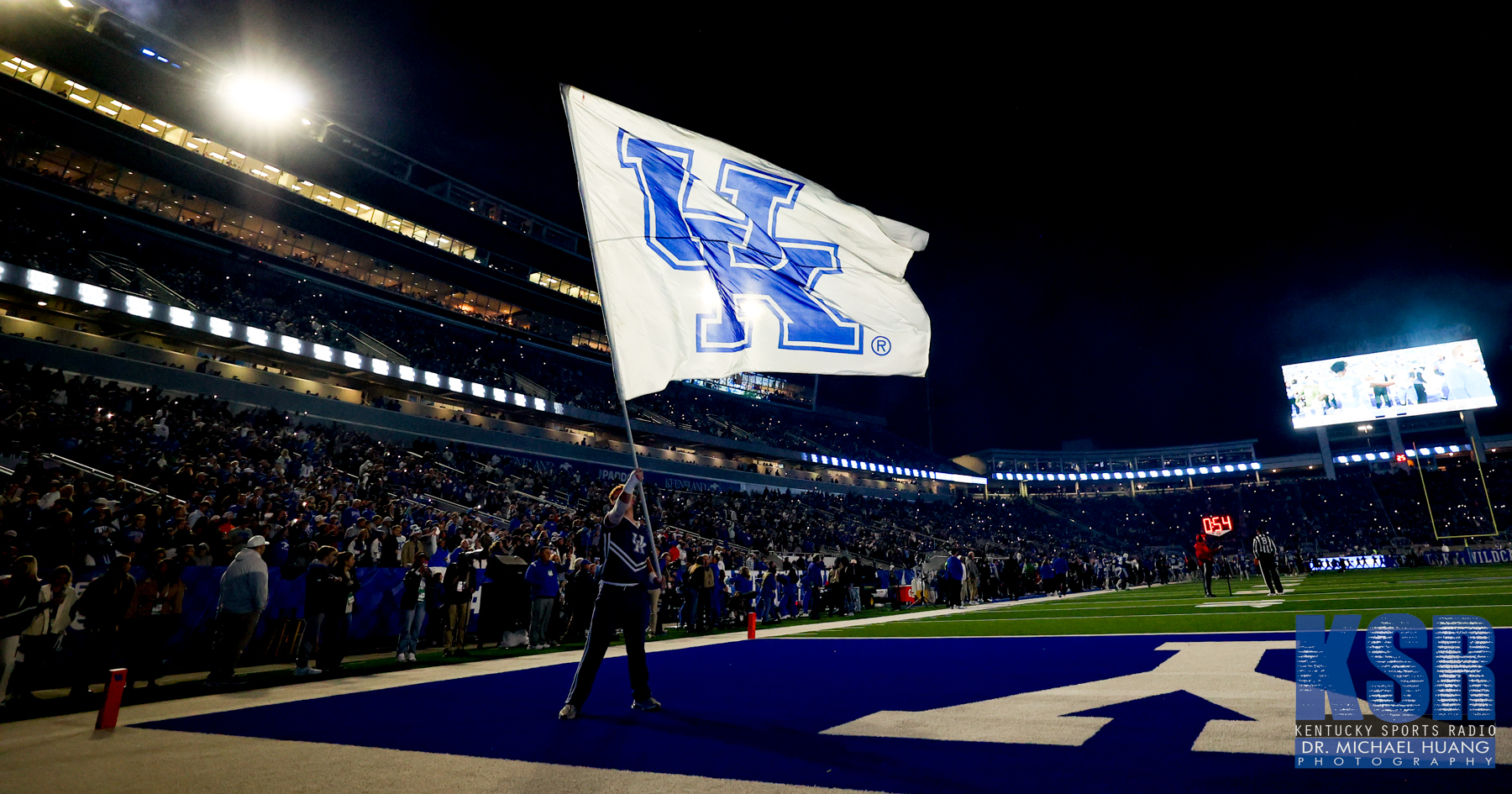
News dropped on Wednesday that Oregon director of recruiting Pat Biondo will be Kentucky’s new general manager. His work will start almost instantly. Will Stein needs to build his first staff in Lexington, but important roster decisions must be made and a plan to attack the portal must be built.
Through all of that, this football organization will have to manage a salary cap. There will be the allotted rev-share amount from the university and extra NIL funds provided by JMI’s collective. At his introductory press conference, Stein was confident in the financial plan presented by Kentucky athletics director Mitch Barnhart and deputy athletics director Marc Hill during the search. When asked by KSR, Stein confirmed that he will have the funding needed to go build the roster required.
But he and his coaching staff will need help. That’s where Biondo will step in.
“That’s why I’m hiring a general manager,” Stein told KSR’s Matt Jones on Thursday when asked about Kentucky’s NIL structure. “To help us through this, and somebody I trust fully, and that’s been in our system out in Oregon, and knows the landscape of college football. You just gotta be adaptable. You know? You gotta be able to change with the times. It is what it is.”
Part of that could be managing a salary cap and make sure there is enough of the pie allotted for every position. We are still unsure of what Biondo’s specific job requirements will be but it is clear he will be play a large role in Kentucky’s roster-building process. Barhnart called it “ridiculous” to assume that any head coach is not making final roster decisions but a front office structure can help streamline things for the coaching staff and narrow down the pool of targets.
Pat Biondo will help Will Stein and this Kentucky football program adapt to a world where a roster budget has to be balanced. Everyone is still adapting to college football’s new age. UK is doing that by joining the growing general manager trend in college football.
NIL
Penn State ends 54-day search with hire of $40 million college football coach
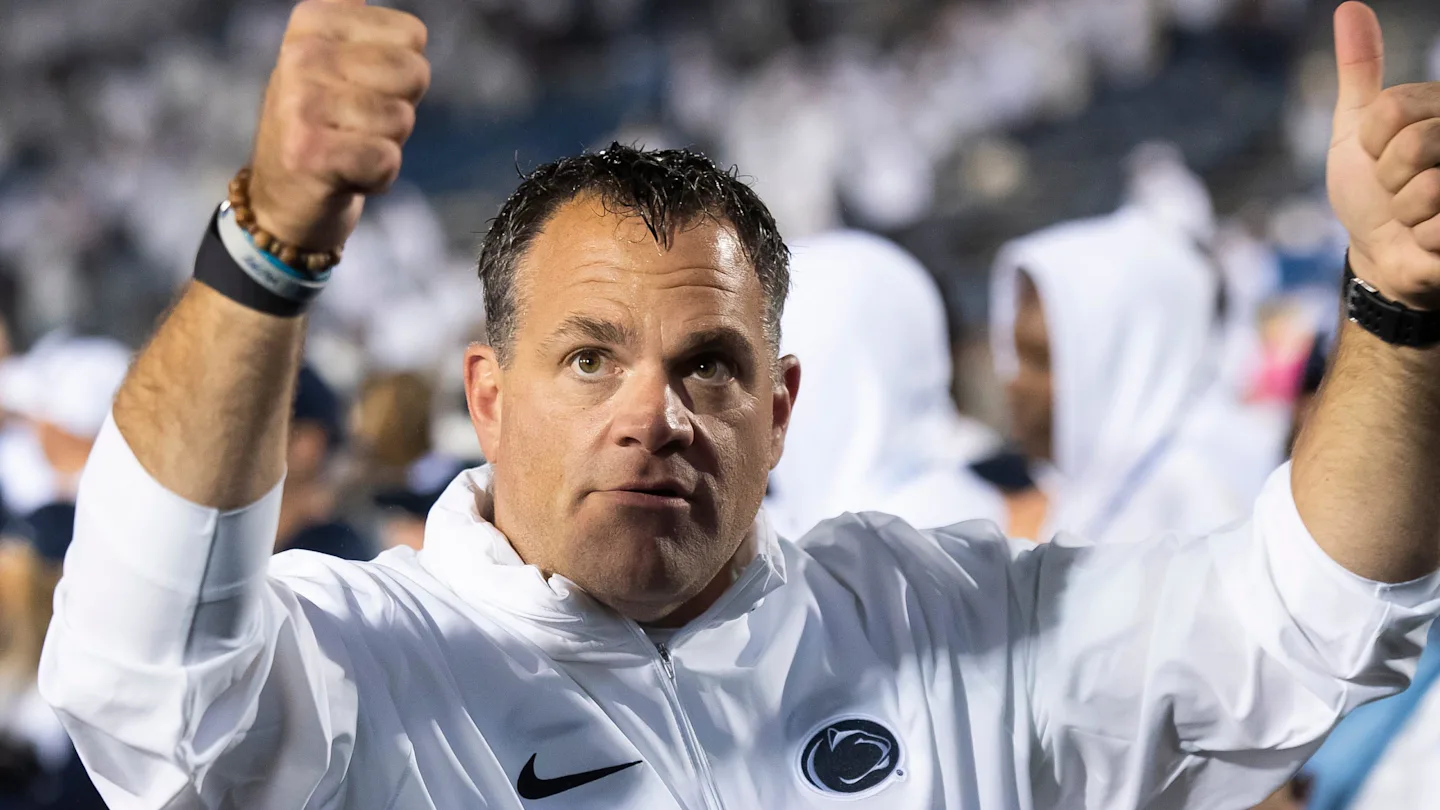
Ding dong! The wicked Penn State football head coaching search is dead at last, or so it seems. The Nittany Lions fired James Franklin from the position a long 54 days ago in mid-October. Now, in the first week of December, all reports indicate that Penn State has found their new leader.
According to both On3’s Pete Nakos and ESPN’s Pete Thamel, two of the highly trusted college football insiders, Penn State is working towards a deal with longtime Iowa State head coach Matt Campbell. On3 tweeted out Friday afternoon that “Penn State is working to finalize a deal to hire Iowa State’s Matt Campbell” according to their man Nakos.
Shortly after that report reached X, Pete Thamel posted his own report confirming that Campbell and Penn State had entered talks for him to assume the school’s head football coaching job.
The sides met in Iowa on Thursday night and have been working toward an agreement since. Nothing is signed, and there’s still a few steps remaining for this to come to fruition.
— Pete Thamel (@PeteThamel) December 5, 2025
“Sources: Matt Campbell and Penn State are working toward a deal for him to become the next coach at Penn State,” Thamel wrote Friday afternoon. “There’s multiple steps needed to finalize, including agreeing to terms and formal approval of compensation.” He reiterates that no official documentation has been dotted.
“The sides met in Iowa on Thursday night and have been working toward an agreement since,” said Thamel. “Nothing is signed, and there’s still a few steps remaining for this to come to fruition.” Don’t count those chickens yet, says the insider, but it’s likely that Penn State’s is teeing Campbell up as the program’s next head coach.

Iowa State inked Campbell to a major long-term deal this summer, just weeks before the season. Starting in 2025, Campbell was signed for eight years, through 2032, at a salary of $5 million per year before incentives. That comes out to a cool $40 million total over the deal, making him a very well-compensated Big 12 coach now that he’s been around for 10 full seasons.
Penn State coaching search was a wild ride
Penn State’s search ends, at last, following nearly two straight months of chaos. Athletic director Pat Kraft received a hoard of praise for pulling the trigger on James Franklin’s firing following the two-loss start to Big Ten play that was wholly unacceptable. But since, Penn State certainly didn’t execute a clean investigation for their next program leader.
Almost too many names to monitor came and went as either sourced candidates, rumored possibilities, or options on various betting markets. Either way, Penn State certainly missed on several top options, earning extensions for several.
In that department, Curt Cignetti and Matt Rhule stick out. Cignetti was an obvious first call but Indiana didn’t even allow his name to escape Pat Kraft’s mouth before he was set with a $93 million extension. Rhule also received a pay bump to stay at Nebraska as soon as Penn St. rumors kicked up. More recently, Penn State made a big push for Kalani Sitake, but BYU boosters and fans publicly rallied to tie down their Tongan war general in Provo.
Did Iowa State make the huge offer for Campbell to stay put? Are the Cyclones preparing a final last-ditch offer this minute to try and stall PSU negotiations? After 10 years, is Campbell simply ready to leave Ames, Iowa? We’ll get answers to all of those questions soon. It sure seems like a Matt Campbell and Penn State union is about to happen.
More on College Football HQ
NIL
Georgia seeks $390K from ex-linebacker Damon Wilson in NIL dispute
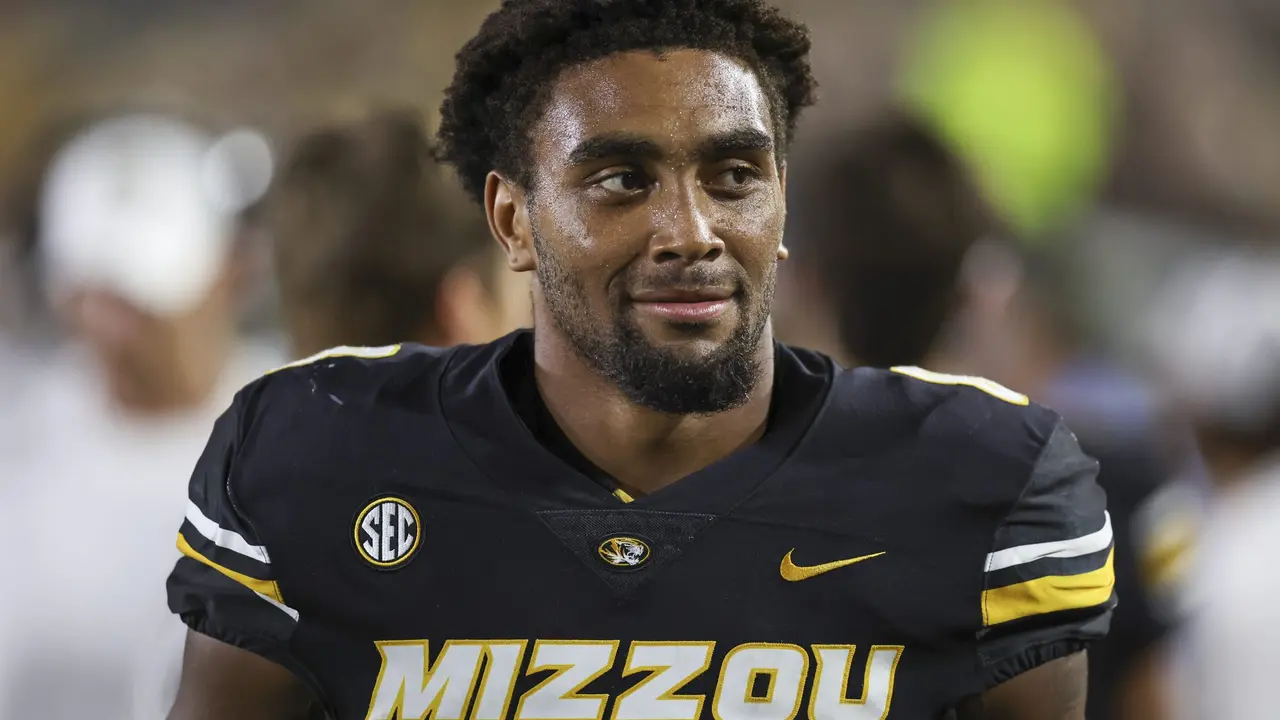

Missouri Tigers defensive end Damon Wilson II (8) on the sidelines during a college football game between the Central Arkansas Bears and Missouri Tigers on August 28, 2025 at Memorial Stadium in Columbia, MO. (Photo by Scott Winters/Icon Sportswire v
ATHENS, Ga. – Former Georgia edge rusher Damon Wilson II is facing a push from the University of Georgia Athletic Association to repay $390,000 after the school accused him of breaking a name, image and likeness agreement tied to his transfer from the Bulldogs.
What we know:
Wilson, now a rising pass rusher at Missouri, was served the lawsuit on Nov. 19 in Clarke County. Court filings say Wilson signed the licensing deal with Classic City Collective on Dec. 21, 2024. The agreement was scheduled to run through January 2026 and paid him $30,000 per month plus additional bonuses for a total contract value of $500,000.
The contract allowed the Collective to immediately terminate the deal if Wilson left the football team, failed to remain enrolled at Georgia, or notified the program of his intent to transfer. If that happened, he was required to repay “liquidated damages” equal to all remaining unpaid licensing fees.
According to the lawsuit, Wilson told Georgia on Jan. 6, 2025, that he planned to transfer. He withdrew from the university on Jan. 13 and left the team the next day. Classic City Collective terminated the agreement on Jan. 14 and demanded repayment of the remaining $390,000.
The Collective later assigned its rights to the University of Georgia Athletic Association.
What we don’t know:
On Aug. 25, 2025, UGAA sent Wilson a formal demand for arbitration under the agreement’s mandatory arbitration clause. Attorneys say Wilson did not respond and has not asked a court to intervene.
What’s next:
UGAA is now asking a judge to appoint an arbitrator and order Wilson to participate in the dispute process. The petition includes a list of proposed arbitrators from the American Arbitration Association’s sports panel and notes that the contract does not specify a method for selecting one.
The motion was filed on Oct. 17, 2025. Court records show Wilson has not submitted a response.
Why you should care:
Classic City Collective is the primary NIL organization supporting Georgia athletes. Wilson appeared in 11 games as a freshman in 2024 before entering the transfer portal and committing to Missouri.
The case carries significance because it tests how far schools and collectives can go to enforce NIL contracts when athletes transfer.
A ruling could influence how players approach the transfer portal while still under contract and may shape how future NIL agreements are written.
The dispute also underscores the limited protections college athletes have in contracting and is drawing attention because Wilson is a high-profile SEC player whose situation could affect others across the sport.
The Source: The details in this article come from Clarke County court documents and previous FOX 5 Atlanta reporting.
-

 Rec Sports2 weeks ago
Rec Sports2 weeks agoFirst Tee Winter Registration is open
-

 Rec Sports1 week ago
Rec Sports1 week agoFargo girl, 13, dies after collapsing during school basketball game – Grand Forks Herald
-

 Motorsports2 weeks ago
Motorsports2 weeks agoCPG Brands Like Allegra Are Betting on F1 for the First Time
-
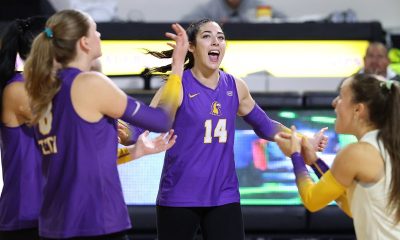
 Sports2 weeks ago
Sports2 weeks agoVolleyball Recaps – November 18
-

 Motorsports2 weeks ago
Motorsports2 weeks agoF1 Las Vegas: Verstappen win, Norris and Piastri DQ tighten 2025 title fight
-

 Sports2 weeks ago
Sports2 weeks agoTwo Pro Volleyball Leagues Serve Up Plans for Minnesota Teams
-

 Sports2 weeks ago
Sports2 weeks agoSycamores unveil 2026 track and field schedule
-

 Sports2 weeks ago
Sports2 weeks agoUtah State Announces 2025-26 Indoor Track & Field Schedule
-

 NIL6 days ago
NIL6 days agoBowl Projections: ESPN predicts 12-team College Football Playoff bracket, full bowl slate after Week 14
-

 Sports1 week ago
Sports1 week agoTexas volleyball vs Kentucky game score: Live SEC tournament updates
















